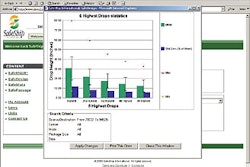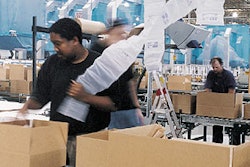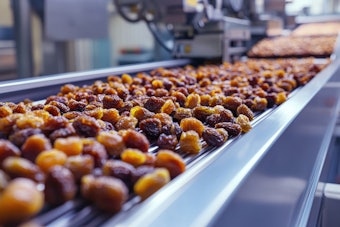E-tailer eToys uses air-filled plastic cushions, biodegradable “peanuts” and kraft paper as dunnage to protect its shipments to consumers. What determines which option will be used?
“The decision has been very simple so far,” explains Richard Tannenbaum, eToys’ former vice president of fulfillment strategy. Biodegradable peanuts have been used at the now-closed City of Commerce, CA, facility for baby products. At press time, it was uncertain if those products would be packed at the company’s Ontario, CA, facility or at a plant in Blairs, VA.
At Ontario, “We use the air cushions for boxes that weigh less than 10 pounds,” he notes. “Once the boxes reach that weight, we would want to use paper. As a general rule of thumb,” he adds, “if we used more than 15 air cushions to protect product in a case, we should have used paper. Our operators are trained,” to make these determinations.
To maximize flexibility at the Ontario plant, eToys uses both air cushions and kraft paper, the latter supplied by Fasttrack Systems (Horsham, PA). “The paper dunnage comes to us on large rolls. We have one machine positioned at each of our six packaging lines. A machine operator presses a pedal and a stream of the crumpled kraft paper shoots out the front of the machine,” Tannenbaum adds.
Not surprisingly, economics also are factored into the dunnage decision. There’s two cost factors that eToys considers. The first is a pure material cost comparison. “We judge the cost dynamic by linear distance or cubic feet,” Tannenbaum explains. “In other words, how much of each product do we need to fill the void in a particular box.
“I’m a little reluctant to go into specific economics and which is the most efficient, but the Cell-O air bags are about twice as costly as kraft paper in terms of cubic air space,” he notes. “But you have to consider the larger picture.”
That larger picture encompasses the second factor in the dunnage decision. “The crumpled kraft paper is much cheaper than the air bags, and it’s also much heavier,” says Tannenbaum. “The disadvantage with the crumpled paper is in shipping lighter-weight boxes. In this instance, the heavier paper could be enough to bump those boxes into the next weight shipping class, which in some cases could be 50 to 75 more cents. So we would choose the lighter-weight air bags for these boxes.
“With a heavier box,” he says, “the weight classes become larger when you’re up over 10 pounds. And it’s unlikely that adding the paper dunnage would bump the package into the next weight increment, so we wouldn’t use the air bags.”
See the main story that goes with this sidebar: E-tailer cushions itself in a perilous environment


























